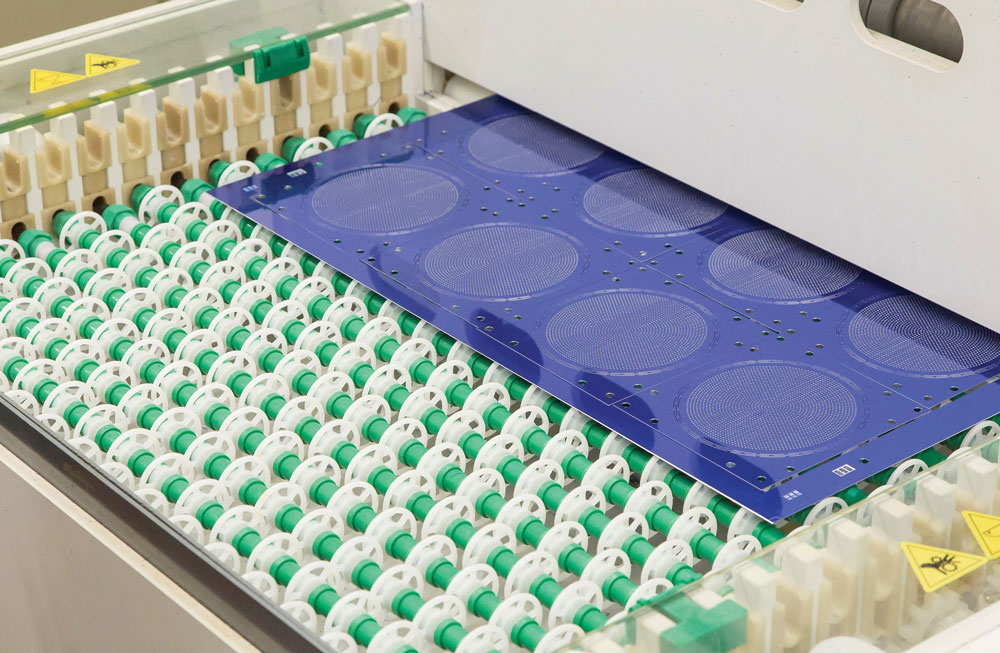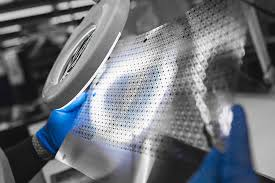
The process of chemical etching provides precision components by selectively removing metal printed with a CAD image of the design. Further, this process has proved itself a highly exceptional technology of sheet metal machining for complex and safety-critical metal parts.
Moreover, this awesome technology also has opened up design possibilities that were considered unachievable in the past. As compared to old and traditional techniques like stamping, waterjet, and laser cutting, it has extreme benefits.
This guide has arranged for you to explain the several types of etching. As well as how does the metal etching process work? Further, which chemical is used in chemical etching?
It is a chemical milling or you can say it an industrial etching. In fact, it is a subtractive manufacturing process. Further, it uses baths of temperature-regulated etching chemicals to remove material to produce the objects with the desired shape.
It is also famous as the name of electrochemical etching and photo etching processes. Moreover, it is also an ideal process for metals as well as highly important for several other materials.
This process can produce flat and stress-free components with the help of selective etching through a photo-resist mask. Moreover, chemical etching is ideal for manufacturing precision parts like:
This technique of etching with the help of chemicals is highly advantageous. If we compare it with conventional technologies of metal manufacturing, it has countless inherent advantages. For example, this etching technique is agnostic to metal choice.
In addition, this process is extremely suitable for all types of metals whether they are ferrous or non-ferrous. Moreover, it is also a perfect choice for the following metals such as:
Further, chemical etching is also an ideal technique for those metals that are actually hard to machine. For example, titanium and aluminum and all their alloys. Additionally, it is also useful for high-temperature alloys like manufacturers can also process Inconel.
It is an extremely high speed and low-cost process. Furthermore, it has great flexibility as well as suitability for complicated designs. Basically, it also can create burr-free components that have highly additional properties.
These parts can't change their structure and designs even by stress and heat. Basically, an etching process that uses chemicals for manufacturing its precision designs has many types.
All these types are useful and beneficial for aircraft and all other major industries. Here we have arranged all types of chemical etching for you. Let's check out!
This technique is useful for etching metals by using acid baths to subtract material. Hence, it produces the perfect parts according to the desires of several industries. In fact, this technique includes 5 essential steps:
For example, cleaning, masking, scribing, etching as well as demasking.
This etching technique is ideally used in the industry of aerospace as it needs complex components. Furthermore, this process is useful at those stages where mechanical machining can't help to create highly precise parts.
Macro etching is another form of chemical etching. Moreover, it can reveal the large-scale structure of a metallic sample. You can easily see the designs using an unaided eye.
This technique is useful to study welded, machined. Further, you can also use it for heat-treated components. Especially for nickel-based alloys, titanium, steel. Its typical components consist of crucial rotating parts like shafts, fans, compressor blades, and discs, etc.
You can also call it surface temper etching or temper etching. Moreover. it is a special kind of non-destructive test. Actually, it is beneficial to use to determine if overheating has occurred in any part.
Basically, Nital is a blend of alcohol and nitric acid. This process can detect surface variations. As softer tempered materials can darken faster in comparison to harder areas.
This kind of chemical etching has advantages to use for testing bearings, gears, and shafts. Moreover, these systems can also be widely used in
In fact, it is a greatly sensitive and non-destructive testing (NDT) technique. Further, it is useful to use for detecting surface discontinuities like cracks, folds, overheating, material segregation. Additionally, Blue Etch Anodizing is also ideal for abnormalities that have been caused by machining.
Manufacturers are increasingly using blue etch anodizing plants in the energy and aerospace industries to check gas turbine blades. As well as to check several other critical components.
As we have already described to you that chemical etching is a highly precise subtractive process of manufacturing. In addition, it makes use of baths of controlled etching chemicals. These chemical baths help to selectively remove material.
Hence, this process can easily create metal parts in several desirable shapes.
Generally, organic chemicals like citric acid and lactic acids were used as early as 400 BCE for creating perfect products. Moreover, vinegar was also famous to use to corrode lead and produce pigment ceruse. We also call it white lead.
But nowadays, manufacturers are rapidly using ferric chloride to produce high precision products. Further, it is also very safe to use as well as it is a recyclable etchant too. You can easily regenerate and reuse it many times.
Moreover, there are several other etchants like nitric acid but it is beneficial for some special alloys and metals. Several standard chemicals that are applied in chemical etching processes are:
Basically, vinegar has the ability to work best when it has warmed to almost 100°F. Further, it also can give the best results when you allow and a long soak. Actually, plain white vinegar is a form of chemical that you want for perfect parts.
Moreover, you can also use any type of vinegar for the purpose of etching. The process in which manufacturers make a blade blacken is known as "Forced Patina".
In the terms of engineering, we can define chemical etching as a material removal process. Additionally, it has performed by,
Hence, in this process, a liquid reacts with solid material and oxidizes it to create a useful soluble.
Here is a list of useful solvents that PCB manufacturers use for print circuit board etching. These are:

There are several situations in which you have no Ferric Chloride in your stock. Don't panic! In fact, you can easily use a homemade etchant in such conditions. However, you will need these simple things for chemical etching at home:
the process of etching is highly advantageous for all manufacturing industries. Moreover, when it has performed using chemicals, it becomes more beneficial. In fact, it is an extremely inexpensive technique.
Further, it can produce objects with great design flexibility as well as stress-free. Chemical etching is also useful for producing complex designs at a highly low cost.
